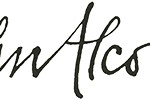Throughout his career, Alcorn showed a fruitful sensibility towards typography and designed a large amount of letters and numbers. Starting with simple lettering, he then expanded his formal language and let his creativity interpret the alphabet producing diverse shapes. The archive material includes a number of preparatory drawings and sketches on pencil and ink, which testify the long and captivating work behind the final version of a writing.
In a time where graphic designers didn’t use computers, creating a typographic style meant making a lot of drafts and as soon as a final version was reached, cutting out the letters with scissors and pasting them in sequence to form words.
We can trace back Alcorn’s interest in typography to his experience at the Push Pin Studios, but it was in the following years that he perfected his style. Above all, his sensibility was simultaneously refined and put to the test by his works for the Morgan Press, whose collection of rare nineteenth-century American wooden typographic characters – gathered from the 1950s onwards by Douglas and Lloyd Morgan – was to make a significant contribution to the eclecticism of visual trends in the Sixties.
It was Alcorn who designed the covers and interiors of various Morgan Press catalogues from 1963 on, namely Wood and Wood 2, as well as two illustrated catalogues in 1964 and 1968: the former experimented with Victorian-style decorative variations, while the latter outlined a style which was closer to the visual taste of the 1960s, of which Alcorn himself was one of the originators.

